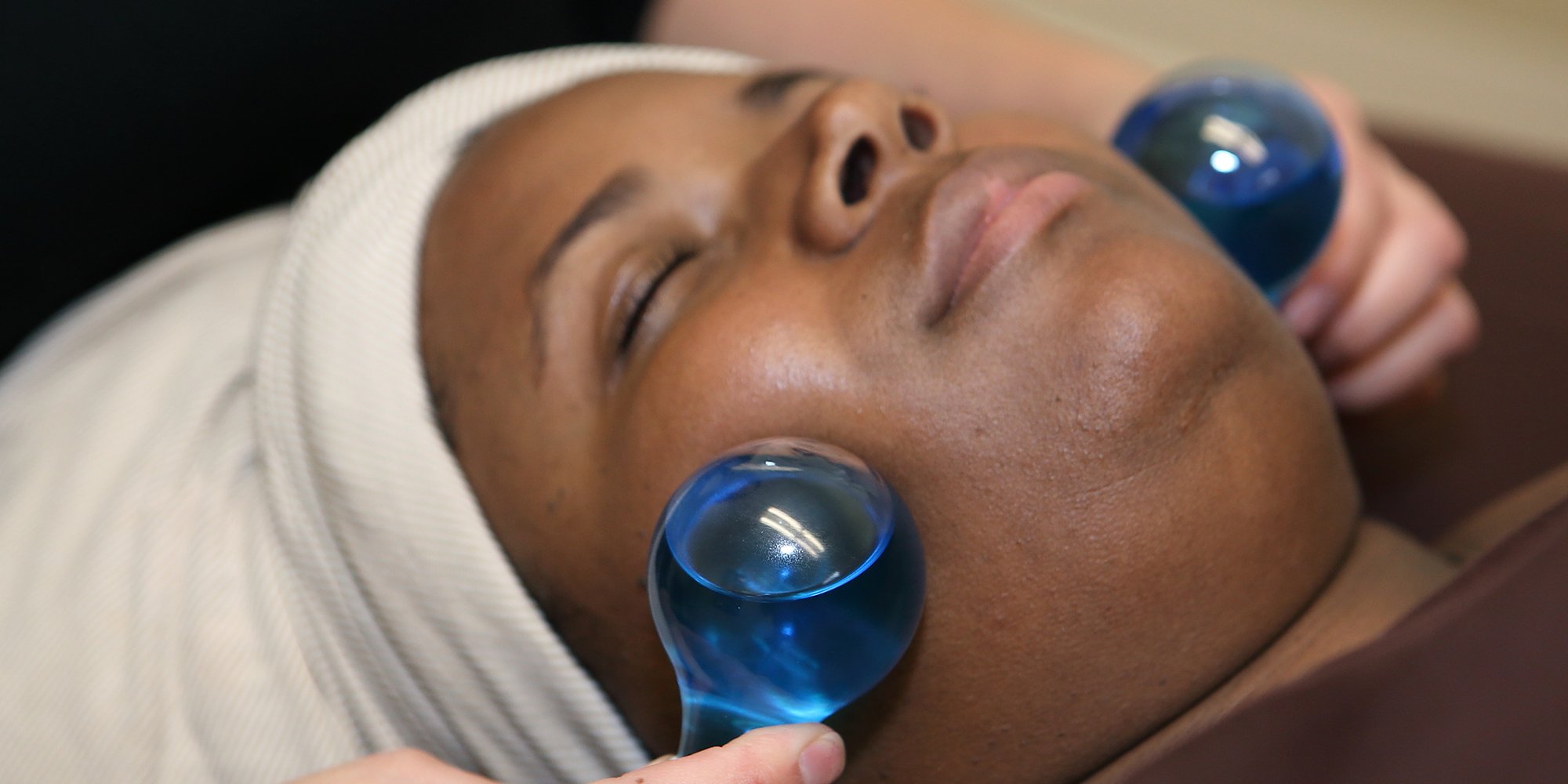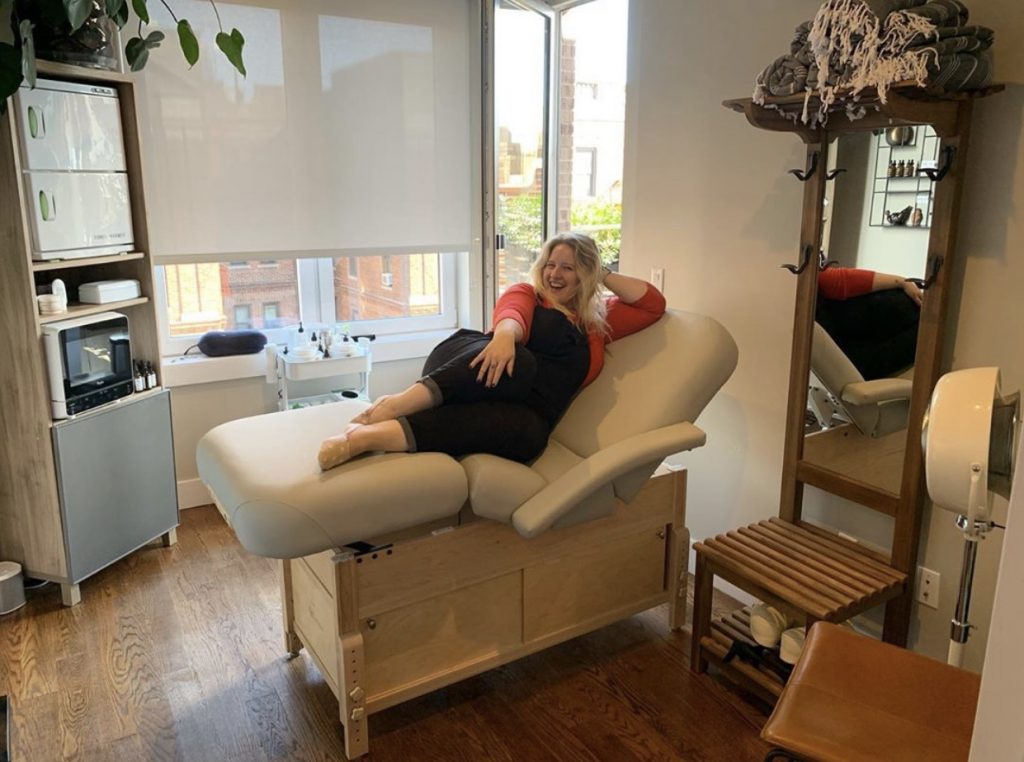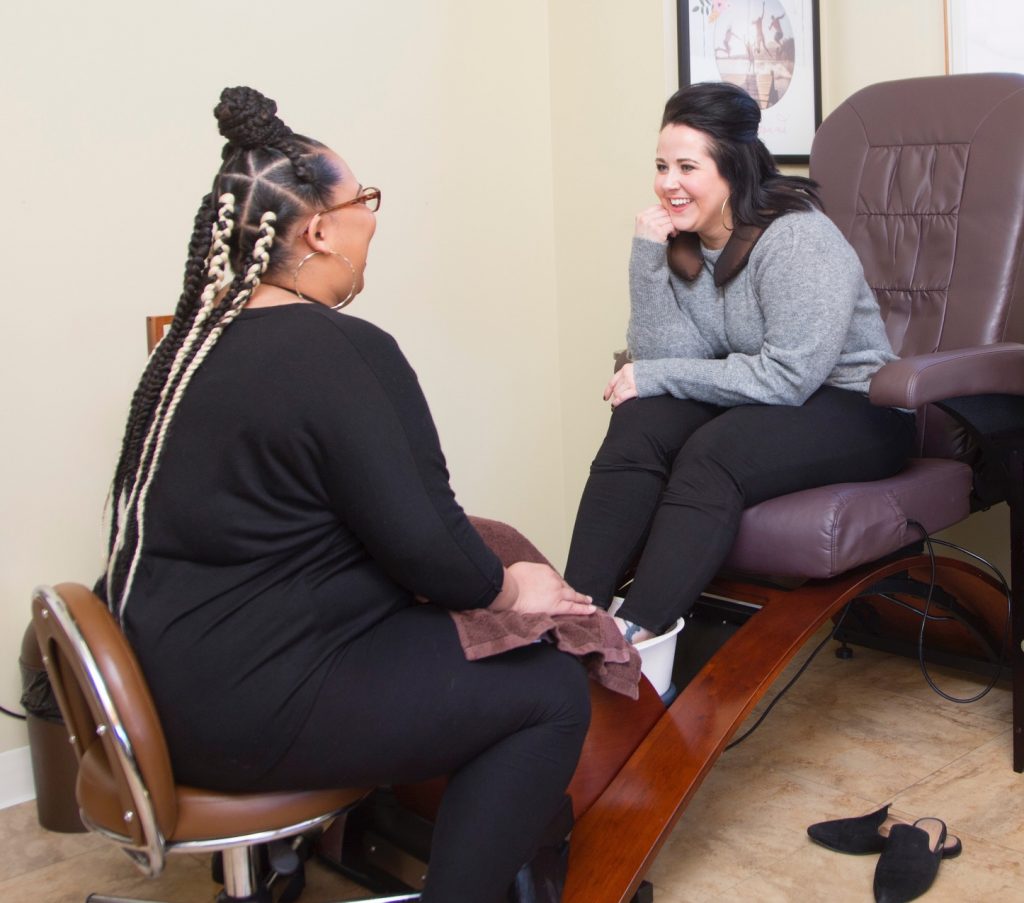
Spas Often Alienate Plus-Size Customers. Here’s How They Can Change.
Sheri Arcuria, a 38-year-old bookkeeper and author, was getting a massage at a spa when the masseuse instructed her, “You need to go to the gym.” The masseuse didn’t end there. “She said my bones were not big, so I had to be skinny,” recalls Arcuria. “In hindsight, I wish I had walked out and complained to the manager, but I was naked.”
Arcuria’s experience isn’t unique. Charlene Bazarian, a 54-year-old attorney and writer, had a similar one after a robe given to her at a spa didn’t fit. She remembers, “I quietly asked the receptionist if they had a larger robe, and she stared at me incredulously and kept saying, ‘Excuse me?’” Bazarian was informed she’d been given a one-size-fits-all robe.
Plenty of people, including plus-size people, have warm and valuable interactions at spas. Becky Beach, a 37-year-old plus-size blogger, praises the welcoming staff at the spa she frequents. She believes their hospitality is helped by the spa’s practice of doling out T-shirts and shorts to customers.
“What made me feel comfortable is that everyone has to wear this uniform to cover their body,” says Beach. On top of the T-shirts and shorts, she points out males above the age of two aren’t allowed in women’s locker rooms at the spa, reducing the chances of young children and men commenting insensitively about customers’ bodies.

Spa treatments, especially body treatments, place clients that have to disrobe for them in vulnerable positions. They can have healing results, but also be sullied by hurtful fat shaming. Fat shaming isn’t just hurtful to individual customers. It can undermine significant potential business for a spa. According to The NPD Group, one-third of female consumers identify as plus-size. That’s a ton of consumers to alienate from spa services.
More and more, spas are becoming conscious of cultivating environments friendly to people of size. They’re considering garments and furniture suitable for a broad range of clients, and training staff to be aware of fat-shaming language. The consequences are profound. If spas don’t appeal to plus-size customers, they can lose out on substantial revenue and the word of mouth pleased customers spread. In the age of social media, a fat-shamed customer can easily alert an extensive audience about a spa’s stigmatizing procedures.
“I don’t ever want to feel like my body shape or size is out of the norm or feel like I need to amend my day to feel pampered.”
“Because I am a plus-size spa goer as well as a leader, I don’t ever want to feel like my body shape or size is out of the norm or feel like I need to amend my day to feel pampered,” says Ashley Shinkle, spa and retail director of the spa at Alderbrook Resort & Spa. “When a guest who may not fit into the one-size-fits-most dressing-down options such as robes or sandals has to reach out directly for alternatives, this absolutely adds a level of discomfort. We like to make sure that all options are presented in a neutral way and allow them to choose options that are most comfortable for them.”
Without the input of larger people, it can be difficult for spas to realize they’re not adequately catering to them. “Our default is to make a space that feels comfortable to us. If we are thin-privileged, able-bodied and white, that can mean a space that excludes a lot of people,” says Natalie Hull, owner and operator at Sugaring Brooklyn. “Moving my fat body from a waiting area to the bathroom and, then, to the treatment room involves me checking each room for furniture that I can fit into, and that I hope will handle my weight, or hoping the bathroom is big enough or that the toilet is far enough away from the wall, or hoping the toilet paper isn’t behind me or in some awkward place that only a thin person could maneuver.”

There are measures spas can implement to accommodate people of a variety of shapes and sizes. One is dressing rooms for patrons who feel self-conscious undressing in front of fellow spa goers, says Cecilia Tate, spa director for PGA National Resort and Spa. Robes in an array of sizes enable a spa to not replicate Bazarian’s experience. Melissa Rackliff, spa director at TallGrass Spa and Salon, suggests it’s crucial they be labeled and accessible so people don’t have to ask for them. She continues that staff can be instructed to appropriately hand robes to clients to prevent them from putting on the wrong kind.
Furnishing spas in an inclusive manner is crucial, too. Hull emphasizes treatment tables should be wide enough to fit a multiplicity of bodies. She says, “Narrow treatment tables mean we have to tuck hands under our own butts, lest they flop uncomfortably off the side and smack our technician.” She advises seating without arms like benches is essential for inclusive furniture arrangements as well.
“Our default is to make a space that feels comfortable to us. If we are thin-privileged, able-bodied and white, that can mean a space that excludes a lot of people.”
Staff education should cover tending to customers of different sizes to ensure plus-size customers receive good treatment. Hull says, “Whatever service you provide, do it on fat bodies, offer a discount until you normalize every small detail. Then, do it on even fatter bodies. You will notice that a 250-pound client will need different things than a 400-pound client.” For example, rather than laying on their sides for a Brazilian wax service, Hull finds a “happy baby” pose is better for larger clients.
Instead of a discount, spas have been known to charge customers of size a “fat tax” or surcharge that isn’t levied against other customers for services like pedicures. The extra surcharge communicates a spa doesn’t regard its customers equally and isn’t inviting to people of size. Inclusive pricing doesn’t distinguish between customers based on size.

Clear language policies are essential to fostering a spa that embraces plus-size clients. “When people dance around the word ‘fat’ or clearly haven’t taken the time to decide what their official language is and normalize it, I’m left feeling like this person didn’t expect me to show up,” says Hull. She elaborates “fat” and “people of size” are acceptable descriptors, and warns that “voluptuous” and “curvy” can sound like euphemisms. Hull stresses having people of size on staff is critical to guiding decisions with them in mind. She notes hiring a consultant specializing in body positivity can further address a spa’s blind spots.
Size inclusivity stretches beyond the inside of a spa to marketing. “If your website, social media and print materials only feature stock photography with young, thin or traditionally athletic people, that sends a message that these are the only people welcome at your business,” says Cassie Sampson, owner of East Village Spa. “Representation is important so that people with diverse body types feel welcome and appreciated at your business, and can visualize themselves using your services.” East Village Spa shoots its own photography with a diverse collection of models and incorporates pictures of its clientele on its social media accounts.
As the fat acceptance movement gains steam, spas can participate in it by offering services celebrating the bodies of people of size. Sugaring Brooklyn, for example, has a Belly Glorification service on its menu involving its signature sugaring hair removal, a massage and a “belly facial.” Hull explains the affirmation of fatness can go a long way toward giving people what they come to the spa for: honoring and caring for their bodies. She says, “Our language is bold and intersectional, and using the word ‘fat’ is often an educational point, giving clients permission to be themselves and feel removed from the harsh fatphobic world.”
Feature image photo credit: East Village Spa
KEY TAKEAWAYS
- Some plus-size spa customers report being fat-shamed or excluded from spas due to their size. As one-third of female consumers identify as plus-size, spas risk losing a significant source of revenue if they alienate people of size.
- Spas prevent making plus-size customers feel unwelcome with measures such as providing robes in different sizes and ensuring their treatment tables accommodate a broad array of body shapes.
- Inside spas and outside them in marketing, spa employees need to be conscious of the language they use to ensure it doesn’t stigmatize people of size. Marketing images should be inclusive so plus-size people understand they’re welcome in the spa environment.
- Services can be designed to help people of size celebrate their bodies.





Leave a Reply
You must be logged in to post a comment.